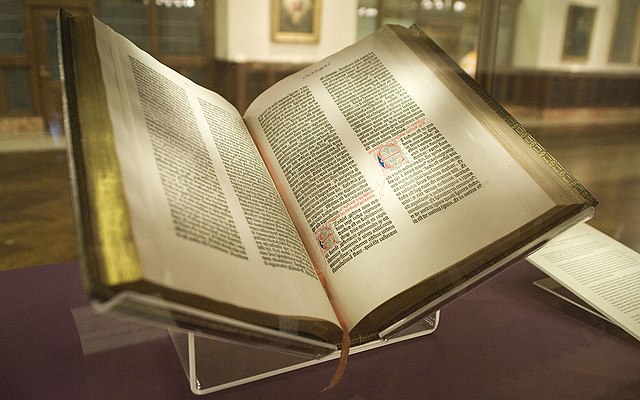The term Abrahamic religion groups three of the major religions together due to their historical coexistence and competition; it refers to Abraham, a figure mentioned in the Hebrew Bible, the Christian Bible, and the Quran, and is used to show similarities between these religions and put them in contrast to Indian religions, Iranian religions, and the East Asian religions. Furthermore, some religions categorized as "Abrahamic" also share elements from other categories, such as Indian religions, or for example, Islam with Eastern religions.
A Jewish Rebbe holds a Torah scroll.
Christianity is based on the teachings of the Bible
A Bible handwritten in Latin, on display in Malmesbury Abbey, Wiltshire, England. This Bible was transcribed in Belgium in 1407 for reading aloud in a monastery.
A cenotaph above the Cave of the Patriarchs traditionally considered to be the burial place of Abraham.
World religions is a category used in the study of religion to demarcate at least five—and in some cases more—religions that are deemed to have been especially large, internationally widespread, or influential in the development of Western society. Buddhism, Christianity, Hinduism, Islam, and Judaism are always included in the list. Some scholars also include other religions in the category, such as the Baháʼí Faith, Sikhism, and/or Zoroastrianism. These are often juxtaposed against other categories, such as folk religions, Indigenous religions, and new religious movements (NRMs), which are also used by scholars in this field of research. Less dividing is the concept of major religious groups.
A 2013 interfaith event in the United Kingdom featuring proponents of the Baháʼí Faith, Buddhism, Christianity, Hinduism, Islam, Judaism, and Sikhism, all belief systems classified as "world religions".





